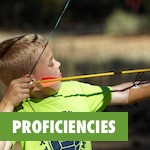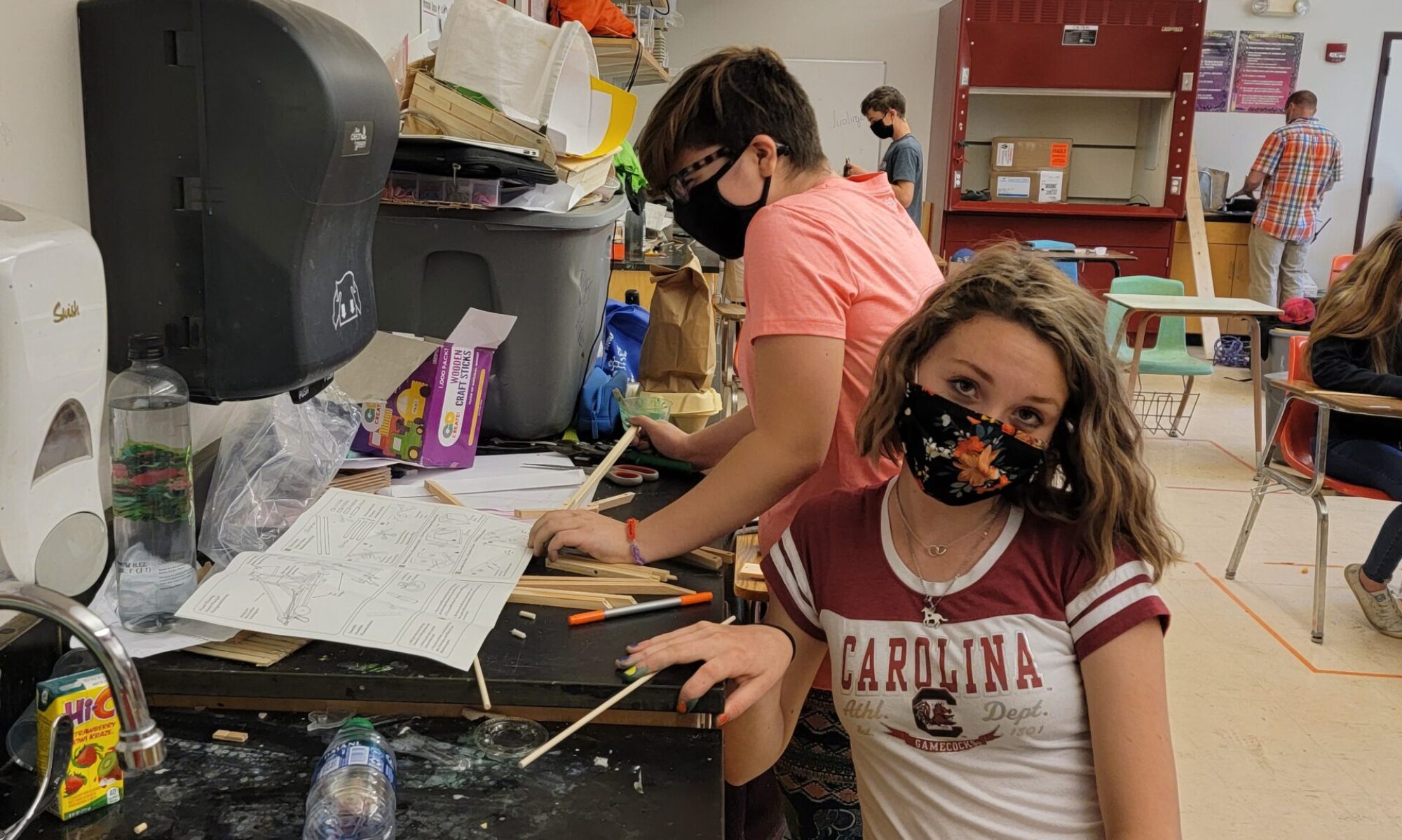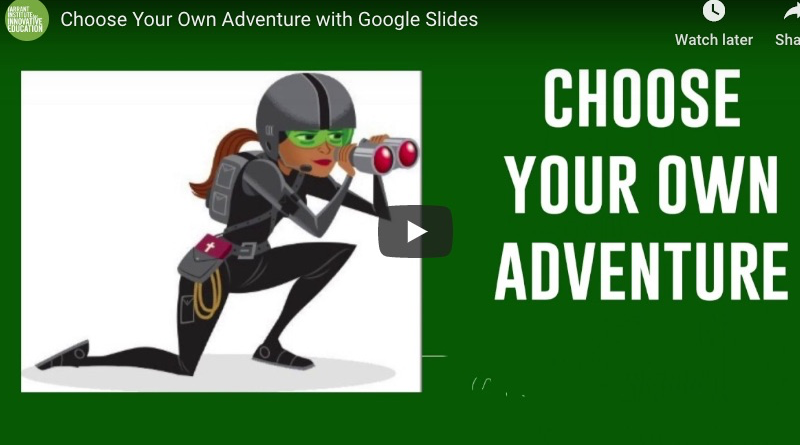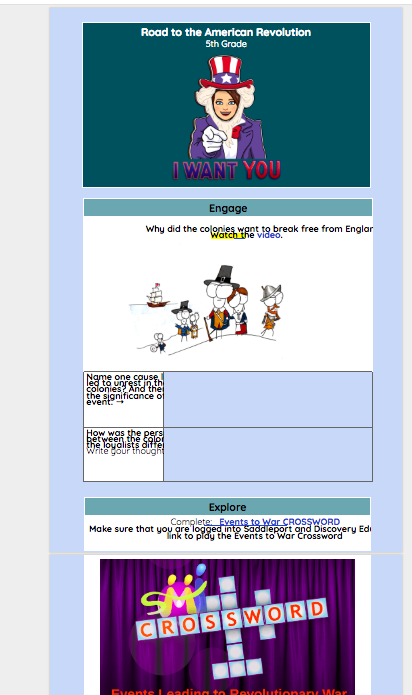Choose Your Own Adventure with 3 easy tech tools
 Students in blended learning classrooms benefit from taking control over the path and pace of their learning.
Students in blended learning classrooms benefit from taking control over the path and pace of their learning.
Their teachers design learning paths which include:
- clearly articulated learning targets,
- readily available instructional activities via digital playlists, and
- built-in benchmarks so students signal when they are ready for an assessment.
But how do busy teachers do it?
Here are three digital tools to create these pathways / playlists. Go ahead and give over some control to your students. Create a “choose your own adventure” pathway to deliver instruction with:
- Google Slides & branching choices
- Hyperdocs
- Deck Toys
1. Google Slides
Gail Moore (@GailKMoore) shares a way she uses Google Slides to create choices along a path for students with interactive student-led lessons. In this short video, I show how she does it using her Mission Possible slideshow.

Try it for yourself by going to her slideshow below.
Make your own copy. Then start branching out with choices. Intrigued by the possibilities, then take a minute to see how you can extend this idea by using If-Then Adventure Stories with Google Slides from Googles Applied Digital Skills curriculum. Encourage students to work collaboratively and build their own branching stories.
2. Hyperdocs
Heard the hype about hyperdocs? Here we go. A hyperdoc, according to the Hyperdoc Girls, is much more than just a google doc with hyperlinks:
“HyperDocs, a transformative, interactive Google Doc replacing the worksheet method of delivering instruction, is the ultimate change agent in the blended learning classroom. With strong educational philosophies built into each one, HyperDocs have the potential to shift the way you instruct with technology. They are created by teachers and given to students to engage, educate, and inspire learning. It’s not about teaching technology, it’s about using the technology to TEACH.”
Let’s look at an example of an American Revolution hyperdoc (we are on a mission) created by Mandy De Groote.
Mandy shared it on the Hyperdoc website for others to use. Following the clear flow of instructional activities, students both collaborate and work at the team’s own pace. Search for other topics and themes using the Hyperdoc website search tool. Or, simply google your topic with the word ‘hyperdoc’ after it to get ideas and borrow from the generosity of others.
Learn more about how to give students choice through path and pacing from the Jennifer Gonzalez’s (Cult of Pedagogy) excellent post How Hyperdocs Can Transform Your Teaching. And, if inspired by Google’s If-Then Adventure Stories from above, check out this Choose Your Own Adventure Stories hyperdoc from Maria DeCicco.
3. Deck Toys
Hang on to your hats! If you liked Google Slides and Hyperdocs, you are going to love Deck Toys. This easy-to-use digital tool creates visually appealing instructional pathways. These paths can be both teacher-directed and student-led, depending upon the need. Check out this Deck created by Chris Bologna to introduce students to parts of a map.
While Deck Toys might take a little more effort to build, what might make it worth it is teachers can track students’ progress while students play the Deck. Teachers then can respond to student feedback needs if necessary based on the results.



